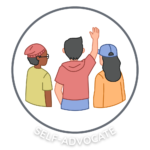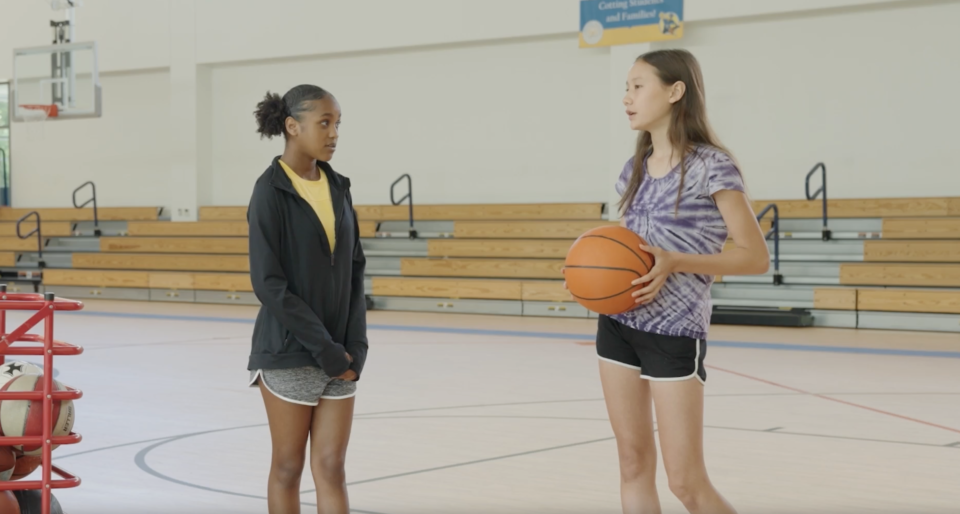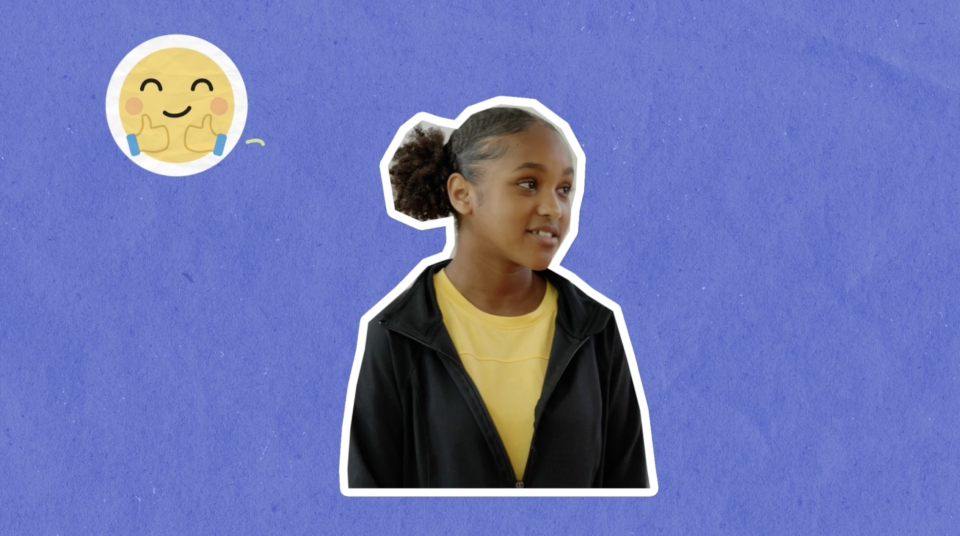
In middle school, students often face challenging social situations and pressure to fit in. Knowing how to say no and advocate for themselves is crucial for building confidence and resilience. However, many students find it hard to stand up for themselves, especially when peer pressure is involved. For high school special educators, Helping Middle Schoolers Say No to Peer Pressure is an essential part of their role in guiding students toward making positive choices.
Everyday Speech offers an engaging video that teaches students self-advocacy skills and how to resist peer pressure in a respectful, assertive way. In the video, students follow Jasmine, a middle schooler who navigates a challenging social situation in gym class. Through her experience, they learn strategies to identify their boundaries, communicate clearly, and make choices that align with their values. Let’s explore how you can use this Everyday Speech resource to empower students to advocate for themselves.
Understanding Peer Pressure and the Importance of Self-Advocacy
Peer pressure can significantly impact students’ decision-making, often causing them to act against their better judgment. Learning to say no to peer pressure is a foundational skill in self-advocacy, helping students set boundaries and make responsible choices. When students understand their values and learn to communicate them effectively, they’re more likely to feel confident and independent in social situations.
Helping Middle Schoolers Say No to Peer Pressure isn’t just about resisting negative influences—it’s about teaching students to respect themselves, set boundaries, and express their needs without fear. Everyday Speech’s video models this process, providing a practical, relatable way for students to learn these essential skills.
Helping Middle Schoolers Say No to Peer Pressure: Step by Step
Everyday Speech’s video breaks down self-advocacy into simple steps, showing students how to identify their boundaries, communicate their decisions, and stand firm in the face of peer pressure. Let’s dive into the video and explore how it teaches self-advocacy skills.
Scene 1: Jasmine Faces Peer Pressure in Gym Class
The video begins in gym class, where Jasmine’s friend, Juliana, invites her to stay back and shoot basketballs after the teacher has instructed everyone to head to their next class. Although Jasmine knows she should follow Coach Martin’s instructions, she feels torn because she doesn’t want to disappoint her friend.
This scene demonstrates the internal conflict many students experience when faced with peer pressure. Jasmine’s hesitation shows the struggle between wanting to fit in and wanting to make the right choice. This relatable scenario helps students see that it’s normal to feel unsure but that they have the power to make their own decisions.

Jasmine’s Inner Thoughts: Recognizing Her Discomfort
As Jasmine considers her options, the video includes her inner thoughts, which reveal her discomfort with staying back in the gym. She knows that following the teacher’s instructions is the right choice, but she feels the pull of peer pressure. This moment illustrates the first step in resisting peer pressure: identifying boundaries.
By recognizing her discomfort, Jasmine takes the first step toward self-advocacy. The video emphasizes that understanding personal boundaries is crucial for making choices that align with one’s values.
Jasmine’s Decision to Speak Up and Say No
In a replay of the scenario, Jasmine decides to advocate for herself by respectfully declining Juliana’s invitation. She says, “No, I think I’ll pass. Coach Martin just asked us not to, and I have to get to my next class.” When Juliana insists, Jasmine confidently repeats her answer, standing firm in her decision.
This response highlights the second step in Helping Middle Schoolers Say No to Peer Pressure: communicating decisions clearly and confidently. Jasmine’s polite but firm response shows students that it’s possible to say no without being rude or confrontational. Everyday Speech’s video encourages students to use respectful language to maintain friendships while standing up for themselves.
Positive Reinforcement: Jasmine’s Confidence and Juliana’s Respect
After Jasmine says no, Juliana respects her decision and suggests they play basketball together another time. This positive outcome reinforces the message that advocating for oneself can lead to respect and understanding from others. Jasmine feels proud of her decision, and Juliana acknowledges that staying back might not have been a good idea.
The scene review in the video highlights the benefits of self-advocacy, showing students that saying no can lead to stronger, more respectful relationships. This final step in the video—standing your ground—reminds students that self-advocacy requires confidence and persistence.

Key Lessons for Helping Middle Schoolers Say No to Peer Pressure
Using Everyday Speech’s video as a teaching tool provides high school educators with a structured way to address peer pressure and self-advocacy. Here are the key lessons for students:
1. Identifying Personal Boundaries
The video teaches students to recognize their comfort zones and values. Jasmine’s hesitation reflects the importance of self-awareness in making responsible choices.
2. Communicating Assertively
By using polite, direct language, Jasmine shows that saying no can be both respectful and firm. Assertive communication is essential for self-advocacy, helping students express their decisions confidently.
3. Standing Firm in Their Choices
Jasmine’s confidence in repeating her decision reinforces the importance of standing one’s ground. Students learn that staying true to their values can lead to positive outcomes, even if it feels uncomfortable at first.
4. Building Respectful Relationships
The positive interaction between Jasmine and Juliana shows that self-advocacy doesn’t harm friendships. In fact, it strengthens respect and understanding between friends.
Unlock more Self-Advocacy materials by signing up for your free trial today – no credit card required!
Access the full Social Communication Curriculum HERE!
Instant access to thousands of no-prep social skills activities, over 1000+ video lessons, and engaging games designed to enhance learning and development.
Everyday Speech’s Resources for Teaching Self-Advocacy
Everyday Speech offers a wide range of resources for teaching social-emotional skills, including self-advocacy and resisting peer pressure. The Helping Middle Schoolers Say No to Peer Pressure video is part of a comprehensive curriculum that makes learning engaging and effective.
From video modeling to interactive activities, Everyday Speech’s curriculum empowers students to navigate social challenges, build confidence, and foster positive relationships. These resources support educators in creating a safe, supportive learning environment where students thrive.
Conclusion: Helping Middle Schoolers Say No to Peer Pressure
Teaching high school students how to advocate for themselves and resist peer pressure is essential to their development. Everyday Speech’s Helping Middle Schoolers Say No to Peer Pressure video provides a relatable, effective way to introduce these skills. By following Jasmine’s example, students learn to set boundaries, communicate assertively, and stand by their decisions.
Incorporate this video into your lessons to help students build confidence, make responsible choices, and foster respectful relationships. By Helping Middle Schoolers Say No to Peer Pressure, you’re setting them on a path to becoming empowered, self-assured individuals ready to face any challenge.
Sample Video
Students learn best by watching others their same-age model the behavior! Check out a sample video modeling lesson below. We offer our entire Social-Emotional Learning platform free for 14 days here!
Related Blog Posts:
Teaching Students Self-Advocacy with Everyday Speech
Teaching Self Advocacy: Effective Lesson Plans for Building Confidence







